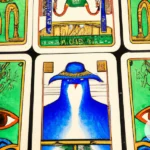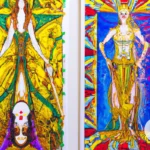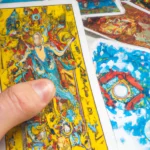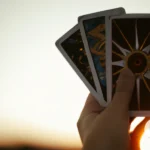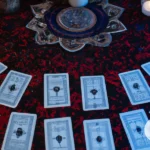Tarot cards have been a popular divination tool for centuries, with the Minor Arcana being the lesser known but equally important part of the deck. The intricate symbolism in each card can be overwhelming to decipher, leaving many wondering where to even begin. In this article, we will delve into the intriguing world of Minor Arcana Tarot cards and guide you through cracking their complex code. From understanding the basic suits and numbers, to analyzing the meanings behind colors, elements, animals and objects, we will teach you how to combine these symbols to unlock deeper insights and practical applications. By the end, you’ll be equipped with the knowledge and tools to interpret any Minor Arcana card with confidence and clarity.
The Minor Arcana

The Minor Arcana is one of the two sections of a traditional Tarot deck. It is composed of 56 cards that are divided into four suits: Cups, Swords, Wands, and Pentacles. Each suit consists of 14 cards that have their own unique meanings and symbols. The Minor Arcana represents the events and issues in our daily lives, and their interpretation can provide valuable guidance and insights into our problems and ambitions. The intricate nature of each card’s symbolism is what makes the Tarot such a fascinating and powerful tool for divination. Before diving deeper into the symbolism of each suit, it is essential to understand each card’s numerology and court cards, as well as the Major Arcana cards that are also present in a traditional Tarot deck.
What Are Minor Arcana Tarot Cards?
Minor Arcana Tarot Cards are an essential part of any Tarot deck and help bring more clarity to a reading. The term “minor” in the name doesn’t imply that they are less important than the Major Arcana Trump Cards. Instead, it signifies that they deal with the everyday aspects of life. In a standard Tarot deck, the Minor Arcana consists of 56 cards, divided into four suits of 14 cards each. Each suit represents one of the four elements: Cups represent water, Swords represent air, Wands represent fire, and Pentacles (or Coins) represent earth.
| Suit | Element | Represented Areas of Life |
|---|---|---|
| Cups | Water | Emotions, relationships, creativity, intuition |
| Swords | Air | Thoughts, communication, challenges, conflicts |
| Wands | Fire | Passion, inspiration, action, career |
| Pentacles | Earth | Material possessions, finances, work, health |
Each suit consists of cards numbered Ace to 10, and four Court Cards (Page, Knight, Queen, and King). Court Cards signify people or situations that have a significant impact on the querent’s life. The number and Court Cards represent experiences and situations related to their respective suit and their associated element.
Understanding the meaning of each suit is crucial to decode the message of the cards. Check out our guides for a more in-depth look at each suit’s symbolism:
The Suits of the Minor Arcana
The Minor Arcana is divided into four suits, each containing fourteen cards. These suits correspond to the suits found in a traditional deck of playing cards and are typically referred to as Wands, Cups, Swords, and Pentacles. Each suit represents a different aspect of life and has its own set of symbols and meanings. Understanding the suits can help you interpret the cards more accurately.
Wands: The Wand cards symbolize action, inspiration, and creativity. They are associated with fire and represent the fiery aspects of the human spirit, such as passion, energy, and ambition. In readings, Wand cards often represent new beginnings, creative projects, and the pursuit of goals.
Cups: The Cup cards symbolize emotions, relationships, and the intangible aspects of life. They are associated with water and represent the fluid, emotional nature of human experience. In readings, Cup cards often represent matters of the heart, such as love, friendship, and emotional healing.
Swords: The Sword cards symbolize intellect, conflict, and power. They are associated with air and represent the mental and analytical aspects of human nature. In readings, Sword cards often represent challenges, struggles, and the need for decisive action.
Pentacles: The Pentacle cards symbolize material goods, abundance, and practicality. They are associated with earth and represent the practical, physical aspects of life. In readings, Pentacle cards often represent financial matters, career development, and personal growth.
By understanding the four suits of the Minor Arcana, you can begin to see patterns and themes in your readings. You may notice that certain suits appear more frequently or that certain cards within a suit tend to have a similar message. To deepen your knowledge of the Minor Arcana, you may want to explore the significance of numbers in the Tarot deck and how they relate to each suit. For more information on the Major Arcana and Tarot symbolism, check out our Journeying through the Fool’s Journey: A Beginner’s Guide to the Major Arcana, The Tarot Secrets Guide, The Significance of Numbers in the Tarot Deck, and Archetypes in Tarot Exploration.
The Numbers and Court Cards
The numbers and court cards in the minor arcana tarot deck serve as another layer of symbolism to help decipher the meaning of a reading. Each number holds its own significance, while the court cards represent distinct personalities or archetypes.
Beginning with the numbers, each of the ten cards in a suit moves from the Ace, representing new beginnings and potential, to the ten, which represents completion and fulfillment. The intervening numbers represent the journey and challenges along the way.
The Ace of each suit is associated with its element and can indicate a new opportunity or the start of a new project. The Two represents balance and partnerships, while the Three signifies growth and expansion. The Four indicates stability and foundations, while the Five can indicate struggle or change. The Six represents harmony and balance, while the Seven can indicate a need for reflection or reassessment. The Eight signifies movement and progress, while the Nine represents attainment and success. Finally, the Ten signifies completion and fulfillment.
The court cards, on the other hand, represent personalities or archetypes rather than stages along a journey. The four court cards in each suit are the Page, Knight, Queen, and King. They are often associated with people in the querent’s life or can represent different aspects of the querent’s personality.
The Pages are associated with learning and taking in information. They are often seen as messengers, bringing news or opportunities to the querent. The Knights represent action and movement, as well as a drive toward a goal. The Queens represent nurturing and emotional intelligence, while the Kings represent leadership, authority, and rational thinking.
Understanding the significance of each number and court card can add depth and nuance to a tarot reading, helping to clarify the meaning of the cards and provide insights into the querent’s situation. By including these layers of symbolism in a reading, a tarot reader can provide a more complete and accurate interpretation.
Understanding Symbolism in the Minor Arcana
The Minor Arcana of Tarot cards are rich with symbolism, representing various aspects of our lives and experiences. Colors play an important role in conveying meaning, with each color carrying its own significance. For example, red can represent passion or anger, while green can symbolize growth and abundance. The elements of fire, water, earth, and air are also present, each signifying different qualities such as passion, emotions, stability, and intellect. Animals can represent qualities associated with them, such as the wolf’s loyalty or the cat’s independence. Finally, objects can hold symbolic meaning, such as the sword representing intellect or the cup representing emotions. Understanding these symbols and their meanings can deepen our understanding of the cards and enrich our interpretations.
Colors
Colors play a vital role in the symbolism of the Minor Arcana cards. Each suit is associated with a specific color, which carries its own meaning and adds a layer of depth to the interpretation.
Here is an overview of what each color represents:
| Suit | Color | Meaning |
|---|---|---|
| Wands | Red, Orange | Represents passion, energy, creativity, and ambition. |
| Cups | Blue, Green | Represents emotions, love, relationships, and intuition. |
| Swords | Yellow | Represents intellect, logic, communication, and mental activity. |
| Pentacles | Green, Brown | Represents material possessions, money, career, and physical well-being. |
It’s essential to note that colors are not the only factor in determining the meaning of a Tarot card. The imagery and context surrounding the color can change the interpretation entirely. For example, a red cup in the Cups suit could represent a passionate relationship, while a red sword in the Swords suit could represent an argument or conflict.
Colors also work together with other symbols in the Minor Arcana. For instance, the red and yellow colors in a Wand card could signify a person’s ambition and logical skills in achieving their goals.
It’s important to pay close attention to the colors in Minor Arcana Tarot cards and learn how to interpret them in combination with other symbols.
Elements
Elements play a crucial role in deciphering the symbolism in Minor Arcana Tarot Cards. Each of the four suits – Wands, Cups, Swords, and Pentacles – corresponds to a particular element. Understanding the significance of these elements can provide valuable insights into the messages conveyed by the cards.
Here are the four elements and their associated suits:
| Element | Suit |
|---|---|
| Fire | Wands |
| Water | Cups |
| Air | Swords |
| Earth | Pentacles |
Fire represents passion, creativity, and energy. It is associated with the Wands suit, which symbolizes inspiration, ambition, and leadership. In a Tarot reading, a card from the Wands suit that depicts fire could indicate a spark of inspiration or energy.
Water represents emotions, intuition, and the subconscious mind. This element is associated with the Cups suit, which represents love, relationships, and imagination. A card from the Cups suit that depicts water could suggest a need to connect with emotions or express feelings.
Air represents intellect, communication, and clarity of thought. It is associated with the Swords suit, which symbolizes decision-making, conflict, and mental challenges. A card from the Swords suit that depicts air could indicate the need for clear thinking or open communication to resolve a conflict.
Earth represents stability, practicality, and material possessions. It is associated with the Pentacles suit, which represents money, work, and material success. A card from the Pentacles suit that depicts earth could indicate the need for stability or a focus on practical matters.
Understanding the elements associated with each suit helps in interpreting the symbolism present in the Minor Arcana Tarot Cards. It provides a framework for understanding the message conveyed by the cards and how they relate to a person’s life. By paying attention to the elements, you can gain deeper insight into the meaning of the card and what it represents.
Animals
The animals depicted in the Minor Arcana Tarot Cards are intentional and hold significant meaning. Each animal represents a particular energy or behavior that is inherent in the card it appears in. Understanding the symbolism behind the animals on the cards can add depth to a reading.
The Wands suit commonly features animals such as the salamander, which represents transformation and regeneration. The lizard, often seen on the Five of Wands, represents agility and adaptability. The ram on the Ace of Wands represents determination and forward momentum.
The Cups suit features animals that represent emotion and intuition. The fish symbolizes the unconscious mind and spirituality. In contrast, the crab can represent fear and insecurity and can be seen on the Eight of Cups.
The Swords suit features predatory animals such as birds of prey and wolves. These animals symbolize power, cunning, and sharp intellect. A good example is the owl on the Six of Swords, which represents wisdom and stillness.
The Pentacles suit features animals that represent the physical realm and material possessions. For instance, the ox symbolizes hard work and perseverance and is often seen on the Eight of Pentacles. The squirrel on the Nine of Pentacles represents prudence and saving.
Bear in mind that the depiction of animals can vary depending on the deck. The traditional meanings of the animals can also change depending on the context of the reading. You should read the card as a whole to understand the message in context.
By deciphering the symbolism of animals in the Minor Arcana Tarot, you can receive a more in-depth understanding of what the card is trying to convey. The animals are just one of the many symbols in the Minor Arcana that can bring depth and meaning to a reading.
Objects
Objects are an integral part of the Minor Arcana Tarot cards’ symbolism. Each object is carefully chosen to represent a specific meaning and add depth to the card’s interpretation. Here are some common objects found in the Minor Arcana and their meanings:
| Object | Meaning |
|---|---|
| Swords | The sword represents mental clarity, truth, and justice. It can also indicate a need for action or a difficult decision. |
| Wands/Staves | The wand or staff represents creativity, inspiration, and ambition. It can also suggest a need for balance between the spiritual and physical worlds. |
| Cups | The cup represents emotions, relationships, and the subconscious. It can indicate love, happiness, or sadness. |
| Pentacles/Coins | The pentacle or coin represents material wealth, stability, and practical matters. It can also indicate a need for grounding or a focus on physical well-being. |
| Chalice | The chalice is a cup or goblet with a stem and base that symbolizes spiritual transformation and the Holy Grail. It can indicate a desire for spiritual growth or a search for deeper meaning. |
| Shields | The shield represents protection, defense, and resistance. It can indicate the need to stand up for oneself or to let defenses down. |
| Birds | Birds, such as doves or eagles, represent freedom, aspiration, and communication. They can indicate a message from the divine or a desire for flight and independence. |
| Flowers | Flowers represent growth, beauty, and connection to nature. They can indicate a focus on relationships or a need for self-care and nurturing. |
Objects on the Minor Arcana Tarot cards can also appear in combination with other symbols, further adding to their significance. For example, a sword and shield together can indicate a struggle between defense and offense, while a chalice and flower can suggest spiritual growth through self-care. When interpreting a card, it’s essential to pay attention to both the individual object and its context in the card as a whole.
Combining Symbols for Deeper Meaning
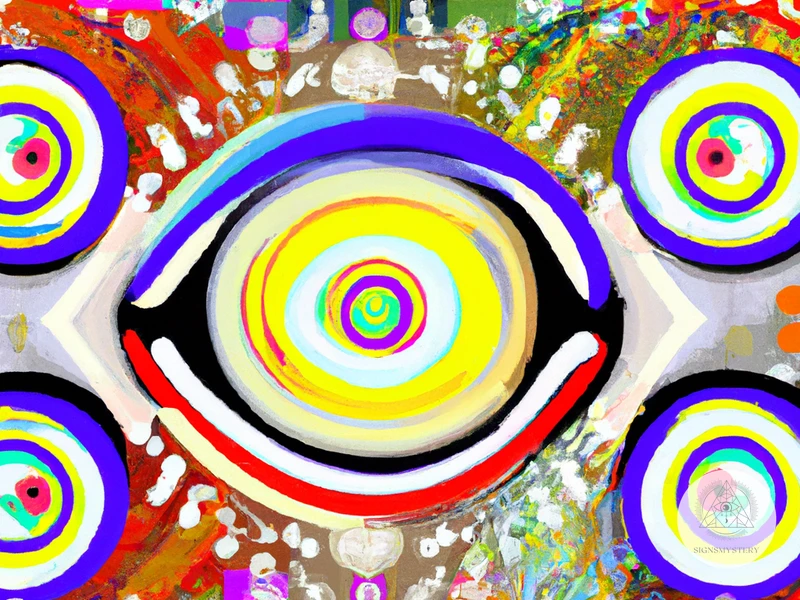
Combining symbols in tarot cards is a crucial part of decoding the meaning behind each card. By understanding the different aspects of each symbol and how they relate to one another, we can gain a deeper understanding of the card’s message. One way to combine symbols is by looking at the suit and number together. For example, the Three of Cups combines the number three, which represents creativity and growth, with the suit of Cups, which represents emotions and relationships. This could suggest a positive and celebratory gathering with friends or loved ones. Another way to combine symbols is by looking at the animal and element together. The Page of Swords, for instance, features a young person holding a sword and surrounded by swirling winds. The wind symbolizes the element of air, which represents intellect and mental activity, while the sword represents the power of the mind. This could suggest a time of intellectual exploration and learning. Finally, combining objects and colors can also provide deeper meaning. The Six of Pentacles features a figure giving out coins to beggars. The coins represent material wealth, while the colors of the clothing suggest generosity and compassion. This could indicate a time of financial stability and giving back to others.
Suit and Number
When it comes to reading tarot cards, suits and numbers hold a crucial role in deciphering the symbolism of the Minor Arcana. Each suit represents a specific area of life, and the numbers within the suit indicate the progression of that area.
The suit of Wands represents the element of fire, symbolizing creativity, passion, and ambition in the areas of work, projects, and ventures. The Ace of Wands signifies new beginnings, the Two of Wands represents planning, and the Ten of Wands indicates the culmination of effort.
The suit of Cups represents the element of water, symbolizing emotions, relationships, and intuition. The Ace of Cups represents new emotional beginnings, the Two of Cups indicates a new relationship, and the Ten of Cups signifies contentment and harmony.
The suit of Swords represents the element of air, symbolizing clarity of thought, communication, and decisions. The Ace of Swords represents mental clarity, the Two of Swords indicates a decision to be made, and the Ten of Swords signifies an end to a difficult situation.
Finally, the suit of Pentacles represents the element of earth, symbolizing the material world, finances, and home. The Ace of Pentacles represents a new financial opportunity, the Two of Pentacles signifies adaptability, and the Ten of Pentacles represents financial stability and abundance.
When interpreting cards, the combination of the suit and number can reveal deeper meanings. For example, the Nine of Cups in the suit of Cups represents emotional satisfaction and fulfillment, whereas the Nine of Swords in the suit of Swords represents anxiety and sleepless nights.
As you become more familiar with the suits and numbers, you will be able to incorporate this knowledge into your readings and gain a deeper understanding of the symbolism within the Minor Arcana.
Animal and Element
When interpreting Minor Arcana tarot cards, the combination of animal and element symbolism can provide a deeper understanding of the card’s meaning. Each animal represents certain qualities, while each element has its own associations.
Here is a table that highlights the animal and element pairings in the Minor Arcana:
| Animal | Element |
|---|---|
| Wands/Swords: Eagle | Fire/Air: Courage, Perseverance, Freedom |
| Wands/Swords: Snake | Fire/Air: Transformation, Power, Intuition |
| Wands/Swords: Lizard | Fire/Air: Adaptability, Regeneration, Intelligence |
| Cups/Chalices: Fish | Water: Emotions, Intuition, Creativity |
| Cups/Chalices: Crab | Water: Protection, Nurturing, Intuition |
| Cups/Chalices: Dolphin | Water: Joy, Playfulness, Intelligence |
| Pentacles/Coins: Bull | Earth: Stability, Grounding, Strength |
| Pentacles/Coins: Goat | Earth: Resourcefulness, Ambition, Perseverance |
| Pentacles/Coins: Bear | Earth: Strength, Courage, Comfort |
For example, the Ace of Wands depicts an eagle holding a wand, which represents the element of fire. The eagle symbolizes courage, freedom, and transcendence, while the fire element represents passion, transformation, and creativity. Together, they suggest a new beginning filled with
Subscribe to Our Newsletter
Sign up to receive the latest news and updates.
Similarly, the Eight of Cups features a crab walking away from a stack of cups, representing the element of water. The crab symbolizes protection, intuition, and letting go, while the water element represents emotions, intuition, and fluidity. The card suggests a time of emotional transition and introspection, letting go of the past, and trusting your intuition to guide you forward.
By combining animal and element symbolism in the Minor Arcana, readers can gain a more comprehensive understanding of the cards and the messages they convey.
Objects and Colors
Objects and colors play a significant role in decoding the symbolism of minor arcana tarot cards. Each object, as well as its color, carries a unique message that can help the reader understand the card’s meaning.
Cups – The cups suit is known for its water symbolism, which represents emotions and intuition. The color blue is associated with peace and tranquility, which are emotions represented in the cards. An overflowing cup can signify abundance, while an inverted cup can represent loss or negative emotions.
Pentacles – Pentacles are symbolized by the element of earth, which represents material possessions, money, and physical objects. The color green is often used to represent nature and wealth, while yellow represents happiness and good fortune. An upright pentacle can indicate financial gain or stability, while an inverted pentacle may represent a loss of money.
Swords – The swords suit represents the element of air, signifying thought and intellect. The color white represents clarity and purity of thought, while the color red often symbolizes conflict, passion, and anger. A sword pointed upwards can signify victory or success, while a sword pointed downwards can represent defeat or suffering.
Wands – The wands suit represents the element of fire, signifying creativity, inspiration, and passion. The color red is used to represent energy and vitality, while the color yellow can represent creativity and new ideas. When a wand is pointed upwards, it can signify progress and achievement, while a wand pointed downwards can represent a lack of action or inspiration.
The objects and colors in each card are carefully selected to convey a specific message. Understanding these symbols can help you interpret the card’s meaning more accurately, allowing you to provide more insightful readings.
Practical Applications
When it comes to tarot reading, understanding the symbolism in minor arcana cards is crucial for accurate interpretations. While it may seem overwhelming at first, there are practical applications that can help hone your skills. Sample spreads are a useful tool for diving deeper into the meaning of the cards and how they interact with each other in a spread. Likewise, practice exercises can reinforce your understanding of the symbolism and how it relates to different situations and questions. Finally, incorporating symbolism in interpretations can add a level of nuance and depth to your readings, allowing you to provide more insightful and meaningful guidance to your clients. By applying these practical tools, you can unlock the secrets of minor arcana tarot cards and enhance your readings.
Sample Spreads
Sample Spreads are a popular way to practice deciphering the symbolism in Minor Arcana Tarot Cards. They are used to gain insight into one’s own life or the lives of others by using the cards as a tool for understanding the present and future. Here are a few different sample spreads that you can use to deepen your understanding of the symbolism in the cards.
| Spread | Number of Cards | Description |
|---|---|---|
| Body, Mind, Spirit Spread | 3 | Each card represents an aspect of the person’s current state. The first card denotes the state of the person’s body, the second card represents the state of their mind, and the third card represents the state of their spirit. |
| Past, Present, Future Spread | 3 | Each card represents a different point in time. The first card represents the past and the events that have led up to the present, the second card represents the present, and the third card represents the future and what may come next. |
| Celtic Cross Spread | 10 | One of the oldest and most popular spreads in tarot readings. Each card represents a different aspect of the person’s life or the situation in question. The first card represents the situation and the person’s current state. The second card represents the conflict that they are facing. The third card represents the root cause of the conflict. The fourth card represents the past, the fifth card represents the present, and the sixth card represents the future. The seventh card represents the person’s attitude towards the situation. The eighth card represents the people around them who may be helping or hindering the situation. The ninth card represents their fears and hopes in regards to the situation. The final card represents the outcome of the situation. |
Using these sample spreads can help you gain practice in deciphering the symbolism in Minor Arcana Tarot Cards. By focusing on the specific aspects of the person’s life represented by each card, you can use your knowledge of the symbolism to gain a deeper understanding of the situation. Remember to trust your intuition and allow the cards to guide you in your interpretation. With practice, you can become more confident in your ability to use the cards for insight and guidance.
Practice Exercises
Practice exercises are a great way to enhance your knowledge of the symbolism used in minor arcana tarot cards. Here are some exercises that you can try to improve your understanding of the subject:
1. Matching exercise: Take a printout of a minor arcana deck and cut out each card. Shuffle them and place them face down on the table. Now, turn over a card and try to match it with a card of the same suit and number. Continue until you have matched all the cards.
2. Interpretation exercise: Choose a card from the minor arcana deck and try to interpret its symbolism. Note down all the symbols you can see on the card and try to find the meaning of each symbol. Finally, combine all the meanings to interpret the card.
3. Symbolism explanation exercise: In this exercise, you will need a partner. Sit opposite each other and take turns to pick a card from the minor arcana deck. Explain the symbolism on the card to your partner. Your partner can ask questions to clarify the meaning of the symbols.
4. Reverse card exercise: Take a few cards from the minor arcana deck and turn them upside down. Study the symbolism on the cards and try to interpret them with the reversed symbolism. This exercise will help you to interpret reversed cards, which is an important aspect of tarot reading.
5. Quick interpretation exercise: Shuffle the minor arcana deck and randomly select a card. Take a quick look at the card and try to interpret its symbolism in one sentence. This exercise will help you to make better decisions during a tarot reading.
These exercises will not only enhance your knowledge of tarot symbolism but also improve your tarot reading skills. Practice them regularly and see the improvement in your readings.
Incorporating Symbolism in Interpretations
Incorporating symbolism in tarot card interpretations can greatly enhance the depth and accuracy of a reading. By considering the symbolic significance of the cards, a reader can uncover hidden meanings and gain deeper insights into the querent’s situation.
One way to incorporate symbolism is to pay attention to recurring patterns in the reading. Are there multiple cards with similar animals, colors or objects? What overall theme do these symbols convey? For example, if several cards featuring water appear, this could suggest a need to focus on emotions and intuition.
Another way to incorporate symbolism is to consider the placement of the cards in the spread. The position of each card can influence its meaning and how it interacts with the cards around it. For example, a card representing obstacles in the past may have a different meaning than the same card representing future obstacles.
Interpreting the symbolism of the Minor Arcana can be particularly useful in providing specific details. While the Major Arcana typically represents broader life themes, the Minor Arcana can give insights into specific people, events or obstacles. Utilizing symbols such as animals, elements, and colors can provide valuable details for the querent to consider.
It’s important to remember that not all symbolism is universal, and interpretation can vary depending on the reader’s personal experiences and cultural background. However, by incorporating symbolism into interpretations, a reader can create a more in-depth, personalized reading for their querent.
Conclusion
In conclusion, the symbolism in the Minor Arcana tarot cards is rich and complex. By understanding the various symbols and their meanings, we can gain a deeper understanding of the cards and their messages.
Whether you’re a seasoned tarot reader or a beginner, familiarizing yourself with the symbolism of the Minor Arcana can greatly enhance your readings. The colors, elements, animals, and objects all work together to create a story that can provide insight and guidance for the individual seeking answers.
When combining symbols for deeper meaning, it’s important to consider the different relationships between them. The suit and number, animal and element, and objects and colors all work together to create a more holistic interpretation in the context of a reading.
To practice incorporating symbolism in your interpretations, try using some of the sample spreads provided or creating your own. By focusing on the symbols present in each card and their relationship to one another, you can create a more nuanced and detailed reading.
Overall, the Minor Arcana tarot cards offer a wealth of symbolism and meaning for those willing to delve deeper into their interpretations. By understanding the colors, elements, animals, and objects present in each card, we can unlock their messages and gain greater understanding and insight into the world around us.
Frequently Asked Questions
What is Tarot?
Tarot is a divination tool that uses a set of 78 cards to gain insight into the past, present, and future.
The Minor Arcana are one of two sections of a Tarot deck. The 56 cards represent the daily trials and tribulations that people go through.
What Do the Suits of the Minor Arcana Represent?
The suits of the Minor Arcana (Wands, Cups, Swords, and Pentacles) represent different areas of life and emotional states. They can also reflect personality traits and can be associated with specific elements.
What Do the Numbers and Court Cards Mean in Minor Arcana Tarot?
The numbers and court cards in the Minor Arcana hold their own symbolism and meanings. They can represent people, situations, and various stages in life.
What Do the Colors in the Minor Arcana Tarot Symbolize?
The colors in the Minor Arcana have different meanings and can relate to emotions, moods, and spiritual connections. Understanding the symbolism behind the colors can help with interpretation.
What Do the Elements in the Minor Arcana Represent?
The elements (fire, water, air, and earth) in the Minor Arcana represent different energies, qualities, and states of being. They can provide insight into a situation or personality traits.
What Do the Animals in the Minor Arcana Tarot Stand For?
The animals in the Minor Arcana can represent a range of meanings. Some are associated with specific elements or personality traits, while others hold their own symbolism.
What Do the Objects in the Minor Arcana Tarot Mean?
The objects in the Minor Arcana can have various meanings depending on the suit and number. They can represent emotions, desires, obstacles, and much more.
How Can Combining Symbols Help with Interpretation of the Minor Arcana Tarot Cards?
Combining symbols in the Minor Arcana can provide a more in-depth understanding of a situation or person. It allows for a deeper analysis of the cards and can help with interpretation.
How Can I Incorporate Symbolism in My Own Tarot Practice?
By studying the symbolism in the Minor Arcana, you can incorporate it into your own Tarot practice. It can help you gain a deeper understanding of the cards and provide more accurate readings.




